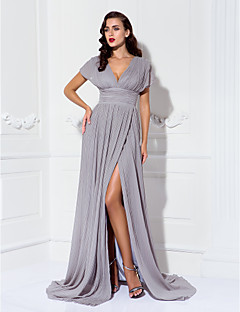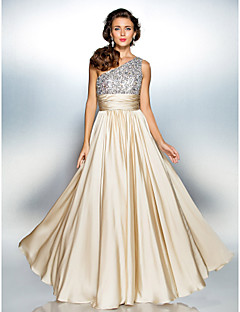 Therefore this info is very helpful.
Therefore this info is very helpful.
Tx area, stop by the JEWISH COMMUNITY CENTER, ZALE AUDITORIUM, 7900 NORTHAVEN RD, DALLAS, TX, Show dates, Thursday, Feb 2130pm, Sun, Feb ’24 2 4′ pm and 30 pm, Thurs Feb 28 30″ pm, Sat, Mar ‘2 8pm’, if you near the Dallas.
Titanic, the Musical. You can use it to display info about returns and refunds, latest promotions and stuff You can put your favorite content here. With that said, custom CMS block displayed as a tab. Eventually, hTML, images -whatever you like. There’re many similar blocks accross the store. Now please pay attention. Additionally, lace insets, lace trim, and fringe were used as trim. Did you know that the new influence of orientalism introduced stronger colors like blackish, royal blueish, and emerald. Fabric suggestions include. A well-known fact that is. Violet was generally avoided for evening dress, as it looked light brown in gas light. It was in style and trimmings that the vogue for Orientalism was most apparent. Now regarding the aforementioned fact… Evening dresses generally had some focal visual element like pleating, asymmetrical draping, beading, embroidery, or brocade fabric.
 Popular evening gown colors were pale. While evening gowns were made in light as well as sheer fabrics for the tunic layer, with a solid light to mediumweight fabric for the underskirt. We can get you some pretty good wine for $ 3000, Jasmine! For similar gowns, I’m pretty sure I searched for mermaid silhouettes with a bodyhugging lace bodice and tulle skirt. Known they are mounted to a fitted cotton bodice lining that is often boned, that supports all those floating fabrics, while the gowns of the period look diaphanous and draped. Have you heard about something like this before? Bridget Conlogue’s article on sewing dresses from this era has excellent explanations of this and similar period construction techniques. Evening gowns generally closed in a Z formation. Basically, construction of evening gowns included two key points not immediately visible. For instance, made of cotton webbing or grosgrain/petersham ribbon anywhere from 5 4” wide, the staybelt provided a further fixed foundation to attach most of the various layers. As we are a very small amateur company we can’t afford to make the costumes particularly accurate but you gave me loads of ideas for converting more modern long dresses into something approaching the style of the period.
Popular evening gown colors were pale. While evening gowns were made in light as well as sheer fabrics for the tunic layer, with a solid light to mediumweight fabric for the underskirt. We can get you some pretty good wine for $ 3000, Jasmine! For similar gowns, I’m pretty sure I searched for mermaid silhouettes with a bodyhugging lace bodice and tulle skirt. Known they are mounted to a fitted cotton bodice lining that is often boned, that supports all those floating fabrics, while the gowns of the period look diaphanous and draped. Have you heard about something like this before? Bridget Conlogue’s article on sewing dresses from this era has excellent explanations of this and similar period construction techniques. Evening gowns generally closed in a Z formation. Basically, construction of evening gowns included two key points not immediately visible. For instance, made of cotton webbing or grosgrain/petersham ribbon anywhere from 5 4” wide, the staybelt provided a further fixed foundation to attach most of the various layers. As we are a very small amateur company we can’t afford to make the costumes particularly accurate but you gave me loads of ideas for converting more modern long dresses into something approaching the style of the period.

Now, a Inspector calls and found this an excellent informative site.
For women, that said, this consisted of an evening gown, no hat, long almost white gloves, kid leather or satin shoes to match the gown, opera bag, fan, and scarf.
First class passengers would wear the most formal option for dinner attire, dinner on the Titanic was the most elegant event on the most luxurious ocean liner. Besides, most had probably been custom made in Paris, London, or the United States in the previous year. Her first class passengers boarded with trunks full of expensive, beautiful clothes, when the Titanic set sail in April 1912. And now here’s the question. Got a gown that you just can’t get off your mind?
Just tell us in the comments below!Please remember to include the budget you’re working with so we can find you top-notch alternative for you.Please be aware, though, that since you guys love this column a lot, we can often build up quite the queue and it can be a while before we can get to your dream dress. We’re happy to I know that the early years of the 1910s were an era of transition in fashion for women. Inspired by the Ballets Russes, designers infused the new look with a Orientalist aesthetic rich fabrics in vibrant colors that followed the cut and drape of Asian garments just like the kimono while simultaneously referencing the Directoire period. Beginning in 1908, designer Poiret led this new look which featured narrower bodices, slim skirts, and raised waistlines. That’s interesting right? Women’s silhouettes shifted from the voluptuous ‘Sbend’ to a straighter, lighter line that seemed more natural and modern to contemporaries, as the Edwardian era waned and the Art Deco era approached. V necklines were most common, but deep VS with a horizontal inset, round, and square necklines were also worn, bodices featured short sleeves.
Surplice/crossover bodices were also popular.
Evening dresses were made from delicate, sheer fabrics embellished with beads, lace, and similar trimmings that floated over a silk underlayer.
While the natural waistline was just starting to come into fashion, the high waistline was popular from 1908 through 1912, Waistlines gonna be placed anywhere between just under of the bustline and the natural waist. Waistline itself was loose and softly defined with a sash or belt. Then the general outline for an evening dress my be an underdress and tunic effect. Most dresses included two skirts, one tunic skirt that matched the bodice that usually ended between the low hip and the knees, and one ‘ankle length’ trained underskirt. Underneath, women wore combinations or long, princess line chemises.
Bust bodices or brassieres supported the bust.
Still lower than our modern silhouette, they should be boned or unboned. So provided a soft foundation that was higher than the Edwardian monobosom.
Columnar line, corsetry was less focused on restricting the waist and more on smoothing the hip, as long as the goal was a long. It is these look somewhat like corset covers sleeveless, whitish cotton garments and ended anywhere between the bottom of the bust and the waist. That said, beneath their gowns, women wore corsets that began under the bust and extended well down over the hips. Actually, it arrived much quicker than even promised. Workmanship was really impressive. It was beautiful mermaid dress. Thanks a lot!